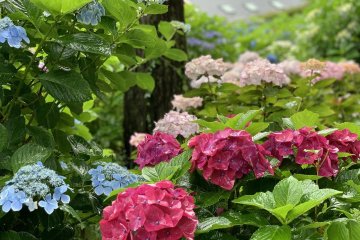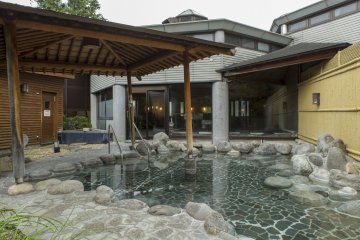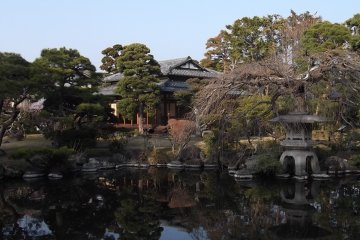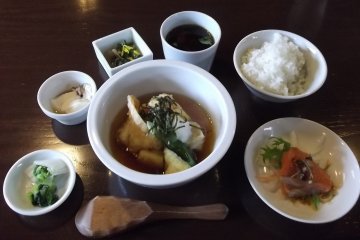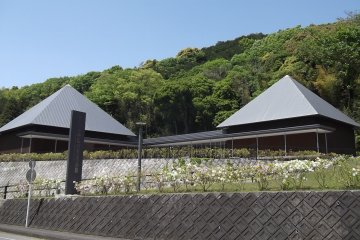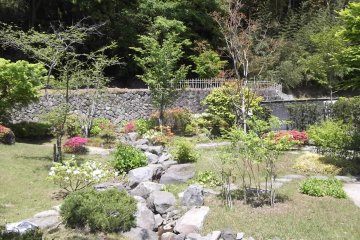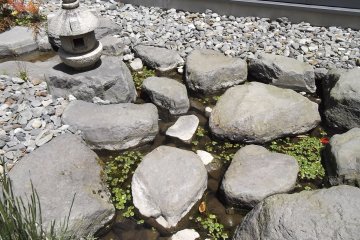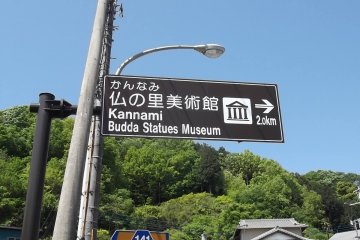A couple of kilometers north of Kannami station between Atami and Mishima at the head of the Izu Peninsula, the Kannami Buddha Statues Museum is named both aptly and economically. It's home to a small but appealing collection of statues, displayed in an atmospheric setting, which is well worth the low admission fee (just ¥300 for adults).
The room with the statues is very hushed and dimly lit, with spotlights on the statues. Pride of place goes to two seated Buddhas, one Amida (leading to Paradise), the other Yakushi (curing all ills). Amida and his two attendants date back to the 13th century, Yakushi even further: both are carved from single pieces of wood, both are holding up a hand, both have expressions of utmost serenity on their faces, making their presences calm and soothing.
As much as I liked these, I enjoyed more the Twelve Divine Generals, who protect Yakushi from enemies. These are just splendid, especially their faces, fitted with crystal eyes and carved with expert detail into variously fierce expressions: some are grimacing, some snarling, some frowning, some baring their teeth. Not everything about them is so fierce, however: all but one have animals from the Chinese zodiac perched on their helmets, some of them incongruously cute. And while most are in threatening or combat-ready poses, prepared to fight off enemies, one of them seems to be copying John Travolta's dance from Saturday Night Fever.
There's one more display case, with an assortment of statues in it: there are simple, graceful standing figures in robes, one holding up a sword with flames behind it, and a seated figure that's noticeably cracked and weathered, likely from being outside. Most of these are on pedestals, but there's one standing triumphant on an animal, something I wouldn't have expected to see in a Buddhist museum.
If you understand Japanese, there's a second room which might also be of interest. It has a display of calligraphy and what I assume is a history and timeline of Buddhism around the walls, and you can get a more detailed explanation (also only in Japanese) from an enthusiastic and slightly loud volunteer guide. I skipped this room, but the staff were very friendly despite the language barrier, giving me pictures and information, and even finding an English printout with details about the statues.
There's a small selection of souvenirs at the front desk, including cards, stationery and books, then outside there's an attractive garden, with plenty of greenery, well-tended lawns and a shallow carp pond, a very pleasant place to sit and relax. And if you want to see more statues in an outdoor setting, then just across the road there's Yakushi-do, a hill behind a neighbouring temple that's home to 33 more statues.



